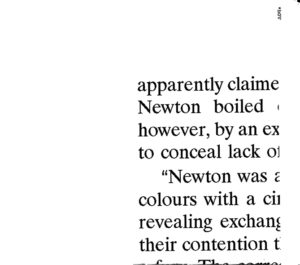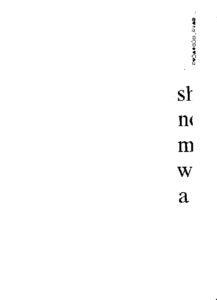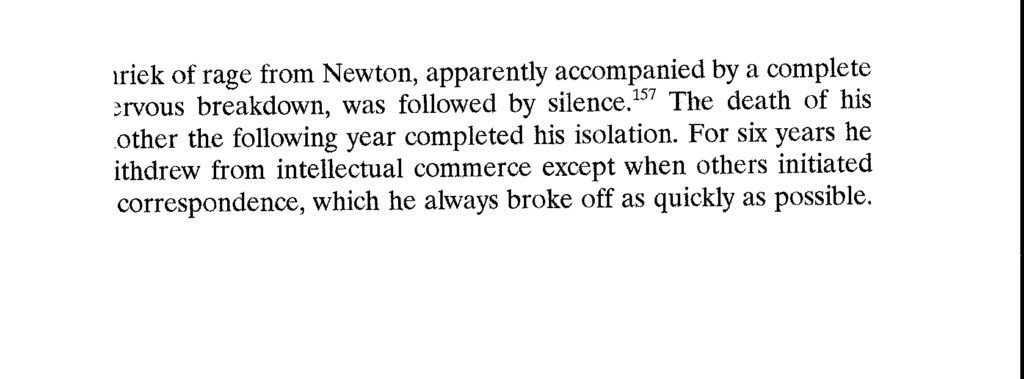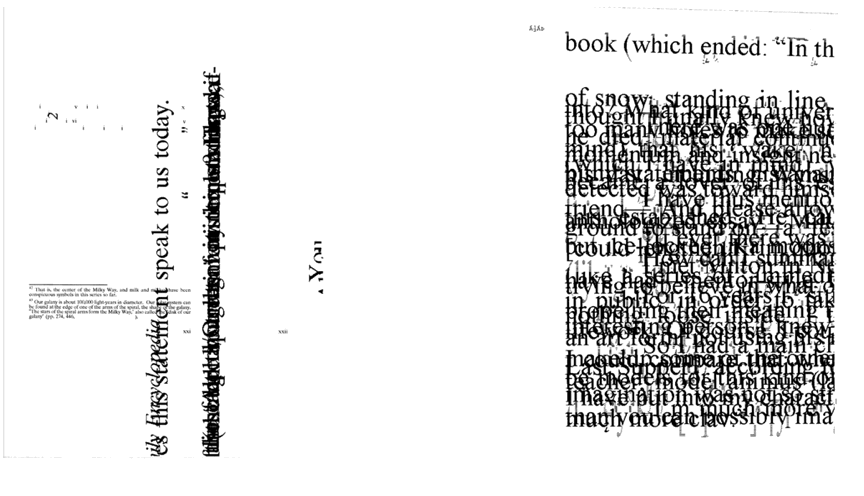During the 1990s, the last ten years I lived in Belgium, I had the good fortune of making the unusual printouts I called computer PK.” There are a couple of samples above and many more in Keep This Quiet! IV. the 1990s were a time I devoted, heart and soul, to exploring this parapsychological experience. This (to me) exciting phenomenon came about through some partly unconscious creative process where when I pushed the button to print, the printouts were often modified from the text on the screen.
Here is a description from Keep This Quiet! IV:
In practically the first instance, I felt alerted something was up. The printer light began to flicker, as if beckoning. I decided to turn the printer off, then back on. And what happened? Something very unexpected.
A single page of rearranged text printed out. By rearranged, I mean a portion of what was on-screen printed out altered. For example, a line might be lifted up, widely separated from the rest of the text, and a “signature” like “*b0W” be inserted beside it. That’s just one example. I called it computer PK. (PK stands for psychokinesis, mind influencing matter, as in spoon bending. Samples are ahead.) Feeling the refocusing effect of the altered text, I marveled. And was often amused.
This second phenomenon, I felt sure—unlike, for the most part, the bell—had to do with higher-consciousness energy (whether a level of myself and/or, I thought more likely, a spirit group I was getting used to “channeling”).
I immediately plunged into “The Milton Klonsky I Knew,” the essay assigned me by Commentary managing editor Marion Magid.
This constant computer surprise delighted me—an artist’s paradise. How the procedure operated is still unclear, though I have made various attempts to narrate it in Keep This Quiet! Ancient Secrets Revealed.
Here is more detail, taken from Keep This Quiet! IV:
Below is an early account I wrote about this “computer PK” process, in 1994. I was trying to convince Program Chair Adrian Parker to let me present at the next international Parapsychology Association convention. As parapsychologists are laboratory-research-oriented, there wasn’t much chance. Nevertheless, I wrote:
Since the beginning of ’91, upon bringing my first computer into the apartment in Belgium, I have experienced unusual text alterations. The computer is a low-budget one, with no unusual attachments. It was programmed by a friend, including the installation of Word Perfect 5.1. The purpose of buying the computer was to facilitate writing a book. It transpired that as I worked first on an article about a man I had known in New York City, “The Milton Klonsky I Knew,” the energy I could feel in the apartment was greatly heightened. I had difficulty sleeping many hours, the sense of intensity was so strong. And there began to appear phenomena of altered text. The subject of the article was someone who had established a reputation of being inexplicable. To many he was a mentor, to others a person hard to know who yet left a feeling of mystery. In the early 1990s in the book The Fifties, he was described as “a Village cult genius of the forties . . . with an IQ that could stutter your butter.”
In my letter to Parker, I alluded to well-known afterlife studies of a famous parapsychologist, Frederic W. H. Myers—the nineteenth-century Cambridge University classics professor and theorist on “the subliminal self”—his intent interest, along with William James, founding members of the Society for Psychical Research in Britain and the United States respectively, in the afterlife. Yet such interest had produced nothing very substantial thus far:
But might it not still happen?
I posit this question because all of it was in the air in my apartment as these strange phenomena began, and only to have felt the intensity in the air was to be unable to stop and say that these were either accidental, idle, or whimsical meaningless changes in the text—from my point of view. I was intrigued. Might this be something really new?
All the concern and motivation of the hope of a new idea, a new answer in science, filled me. I was just as tied to the computer and what might come from it as Stephen Hawkins in England to his. It seemed mine was using this just as he used his computer, in order to say what could not be said, in order to give a means of speaking—to an intelligence that had no normal way to express its words.
In my apartment I collected witness statements: one from U.S. psychologist Robert Van de Castle, past president of the Parapsychological Association.
I will not digress here to lay out the background of what precipitated the first printouts, offering (to me) a rational explanation of the why. I dedicated a full ten years to this period, spending many hours a day at it—times when at the touch of a finger, energy streamed forth in endless supplies and, at the same time, printout creations.
Piled-up variations of the text were so numerous that only by moving to another apartment (and country) eventually did I bring order back again to the archives.
Each printout, like each split-second, was likely to carry some new configuration of the straightforward text on the screen. It was a lesson in high-speed thought, in looking for a new slant, a new emphasis (a new point lifted into focus) in each constellation of the material of life; each kaleidoscopic, subjective or peered-into angle that each new second in the present in fact holds.
Like shifting each new presentation of the before became “rewritten.” In what was supposed to be “repetition.” (One could playfully imagine—which I didn’t —a sign on a virtual printing system, which read: NO REPETITION ALLOWED.)
With so many innovative ideas available in science and meetaphysics, I had space enough and more to guess at what might be behind these displays of technically “unprogrammed” computer reformatting, but also had the art privilege of pursuing something science would be able to explain in hindsight, if it wanted to. I pursued the changing text shapes, as if one could—and why not?—mold the page; as it was energy, after all, clamped down into words. For ten years this provided much of the fuel system for my psyche, in a rather hermitlike existence—a constant inspiration!! Any artist is loyal to the format of his/her creativity. And certainly Jackson Pollock would not forego his style of painting for another—more mundane, less-dynamic and interactive—as opposed to “action painting.”
I wanted to carry the same interactivity over to the reader. “PK1” (on the top left, above) is, of course, un-Photoshopped, whereas on the screen the original page of text was in Times New Roman 12 point, displayed horizontally.
I n “PK2” the text disappears—blown up into overlapping letters. Another style is below. There—difficult to read on this screen—a set of pages—fragments of a single paragraph—have to be pieced together. In this case, five images—five sheets of paper—formed the single paragraph that was once part of a full page of text on-screen. See how the ragged end of one group of lines fits into the lines on another fragment. Needless to say, this whole process fascinated me.





Keep This Quiet! IV has illustrations of Computer PK, as does Space Encounters: Chunking Down the 21st Century or Space Encounters: Inserting Consciousness into Collisions, printed in 8.5 x 11 offset format in Sibiu, Romania, in order to preserve the required handwork and to accommodate the exact reproduction of many such scans.
